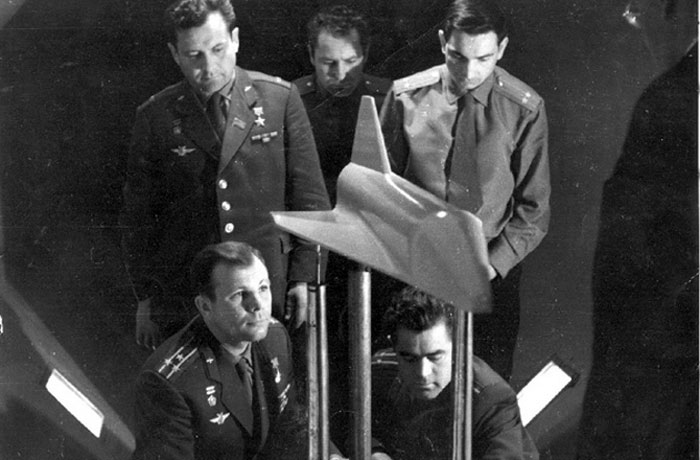.
Catherine the Great built the stunning Petrovsky Palace on Leningradsky Prospekt (Leningrad Avenue) in Moscow as a rest stop for royal travelers in the late 18th century. In 1812, Napoleon sought shelter in the palace’s walls during the Great Moscow Fire. After the 1917 Revolution, part of the great palace was made to house the Museum of the Red Army aviation. And in 1964, Petrovsky Palace became a mandatory stop for space-bound cosmonauts. It became the site of the Zhukovsky Academy where Yuri Gagarin did preliminary work designing spaceplanes for the Soviet Union.
Cosmonauts and cosmonaut candidates (they were “candidates” until they actually flew in space) went through a special course at the Zhukovsky Academy to complete their Pilot-Engineer-Cosmonaut Diploma. To graduate, cosmonauts had to study all aspects of spaceflight and write a thesis in an area of their choosing. It was similar to an American PhD dissertation in that they would have to defend their work before their committee of teachers and tutors in both a written and an oral exam. For his work and thesis at Zhukovsky, Gagarin took on one of the hardest technical problems: designing a practical and reusable orbital spaceplane.
Gagarin’s Falsified Flight Record
Gagarin recognized that the Soviet Vostok and Voskhod capsules were limited, much like NASA’s Mercury and Gemini spacecraft were. Owing to the damage caused by the heat shield burning away during atmospheric reentry, the capsules could only be used once. And without a proper landing system, there was no option but for cosmonauts to either eject or stay in their descent module and hope their landing rockets fired to give them a soft landing. (The Americans, of course, splashed down.) A spaceplane with wings that could slow and control the spacecraft’s descent to landing would simplify everything.
At the time, solving the technical problems of a spaceplane was one of the greatest technical challenges in the still fledgling world of spaceflight. But Gagarin, according to his tutors, took up the challenge with strict self-discipline. He showed incredible foresight when he stipulated in his work that any winged spaceplane had to be capable of unpowered landings. Engines fail, he noted, and saw a spaceplane unable to make an unpowered landing as little more than a deathtrap.
‘First Orbit’ Reveals What Yuri Saw
His first design had the spaceplane land by parachutes, but he quickly realized that defeated the whole point. So he turned to gliding landings. He reasoned that a small retrofire engine would be enough to start the spaceplane’s return from orbit, just like what happened on his Vostok flight, at which point the vehicle should be able to glide aerodynamically to a safe runway landing. It was amazingly similar to the Dyna-Soar’s flight plan, that spaceplane the U.S. Air Force abandoned in 1963.
Gagarin’s tutors thought the whole system was impossible, and so they pushed their student hard to come up with solutions to all the problems they could think of. How would the spaceplane fare with a strong crosswind? What about a sudden, hard gust? How would changing airflow and pressures as the spaceplane traveled through the whole atmosphere affect its maneuverability? Gagarin spent hours crunching numbers and running data and simulations through analogue computers. Throughout it all he reveled in the arguments with his tutors, arguments that ultimately helped him hone his idea.
When the Dyna-Soar Went Extinct
There are pictures of Gagarin with a space shuttle model that looks a lot like Buran (pictured top), the Soviets’ first space shuttle that flew for three hours in 1988 before the program was canceled in 1993. But Gagarin never worked on the program directly; he died in a 1968 plane crash. But his work work at Zhukovsky, considered so advanced that it was classified as top secret, did inform two earlier Soviet space shuttle programs, Lapot and Zvezda. Data from these programs in turn influenced the eventual design of Buran.
So it’s an indirect link, but Gagarin could reasonably be listed among the forefathers of the Soviets’ first spaceplane.
.

Quelle:d-news
.
6528 Views
